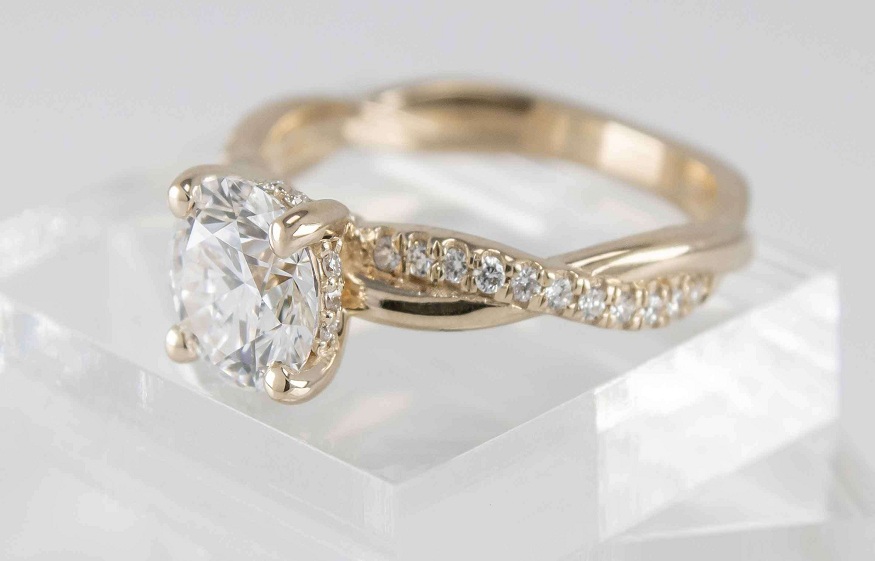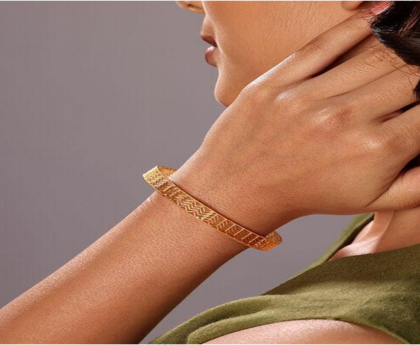For centuries, rings have represented love, commitment, and cultural significance. As time has elapsed, different societies all over the planet have fostered their extraordinary ring plans, each mirroring the qualities, customs, and craftsmanship of their separate social orders. In this investigation, we will travel across the mainland to uncover the absolute most enrapturing and unmistakable ring plans that have endured for an extremely long period.
Celtic Knot Rings (Ireland)
With its rich history and well-established customs, Ireland is home to the entrancing Celtic bunch rings. These rings highlight many-sided plans motivated by the old Celts, who put stock in the interconnectedness of life and forever. The bunches have no start or end and represent the timeless pattern of life, love, and nature. Spirals and trinity knots are common motifs, each with its own particular significance.
The handiwork that goes into making Celtic knot rings, which are typically made of precious metals like gold or silver, is highly prized. Each ring is an actual work of art because the intertwined patterns require a skilled hand to create. These rings have risen above time and continue to be well-known images of affection and solidarity, introducing wearers to Ireland’s rich social legacy.
Claddagh Rings (Ireland)
The Claddagh ring is another notable ring design that is found in Ireland. This customary Irish ring is known for its unmistakable imagery, highlighting three key components: a heart, addressing love; a crown, representing reliability; and two hands, which represent friendship. A powerful representation of love, loyalty, and friendship—the foundations of a long-lasting relationship—is created by the combination of these components.
Rumours have spread far and wide, suggesting that the Claddagh ring started in the fishing town of Claddagh close to Galway. The plan has been embraced as an image of Irish legacy and is many times utilized as a badge of fellowship or a commitment and wedding band. How the ring is worn conveys importance; wearing it on the right hand with the heart confronting outward demonstrates the wearer is single, while confronting the heart internal signs that the wearer is seeing someone.
Posy Rings (England)
The enchanting world of Posy rings is revealed as we travel across the Irish Sea to England. Tracing all the way back to bygone eras, these rings were advocated during the sixteenth and seventeenth hundreds of years. Including inscriptions, typically in the form of brief poems or phrases, either inside or outside the band, distinguishes Posy rings.
Posy rings were traded as images of adoration and responsibility, frequently filling in as commitment or wedding rings. The engravings added an individual touch, permitting the provider to convey their sentiments in a lovely way. While the prevalence of Posy rings melted away after some time, their authentic importance and novel appeal make them pursue old-fashioned pieces today.
Gimmel Rings (Europe)
Gimmel rings, otherwise called “joint rings” or “twin rings,” have an intriguing history that traverses across different European nations, including Germany and Italy. These rings became prominent during the Renaissance and were frequently used as wedding bands. The characterizing element of a Gimmel ring is its plan, which comprises of a few interlocking groups, each addressing a different party.
During a pledge function, the connected with couple would each wear one piece of the Gimmel ring, representing their obligation to one another. At the hour of the wedding, the rings would be brought together to frame a solitary, complete ring. This custom represented the association of two people in marriage, making a substantial portrayal of their approach together.
Mokume Gane Rings (Japan)
Wandering into the Far East, Japan acquaints us with the stunning speciality of Mokume Gane. This customary Japanese metalworking strategy involves layering different-hued metals, like gold, silver, and copper, and then controlling them to make exceptional woodgrain-like examples. The subsequent material is utilized to make staggering and exceptional rings.
Mokume Gane rings are praised for their extraordinary craftsmanship and the inborn magnificence found in the natural examples made during the cycle. These rings frequently highlight unpretentious hearty tones and streaming lines, making them an epitome of nature’s magnificence. Mokume Gane, which was originally used to fit swords, has found a new home in contemporary jewellery, offering a mix of tradition and modernity.
Puzzle Rings (Turkey)
Turkey gives us the charming Riddle rings, a customary plan that has enthralled individuals for a really long time. These rings are made of a number of bands that are connected to each other and form a single, cohesive ring when they are arranged correctly. The intricacy of the interlocking groups represents the complexities of connections and the significance of solidarity.
Puzzle rings were generally utilized as a trial of an accomplice’s constancy. The ring would disassemble when taken off, revealing any attempts to remove or replace it. Over the long run, these rings developed from an image of trust to special and stylish bits of gems. Current understandings frequently highlight gemstones, adding a dash of extravagance to the perky plan.
Betrothal Rings (Russia)
In Russia, the practice of pledge rings has profound social roots. These rings, otherwise called “wedding bands” or “handfasting rings,” are portrayed by many-sided plans and frequently integrate strict images. Russian pledge rings are generally worn on the right ring finger and are traded during a pledge function, which is a substantial, far-reaching development.
The plans of pledge rings change, with many highlighting images of adoration, success, and security. Some might integrate gemstones or polish specifying to improve their visual allure. The level of craftsmanship put into these rings demonstrates the significance of marriage in Russian culture.
Hmong Story Cloth Rings (Hmong Culture)
The Hmong public, an ethnic gathering local to Southeast Asia, has an exceptional practice of making story materials that portray their social stories. This custom has enlivened the making of Hmong Story Fabric Rings, which include complicated designs suggestive of the narrating artistic expression.
Made with meticulous detail, these rings frequently integrate dynamic tones and emblematic themes that mirror the Hmong nation’s set of experiences and convictions. Each ring is a wearable representation of cultural heritage because the designs may feature elements of nature, everyday life, or spiritual symbolism. Hmong Story Material Rings exhibit the creative ability of the Hmong public and act as an unmistakable connection to their rich social embroidery.
Conclusion
Rings, with their immortal allure and widespread importance, continue to develop in plan and social significance. Each culture brings its own distinct story to the world of ring design, including the intricate Celtic knots of Ireland, the symbolic Claddagh rings, the long history of Posy rings in England, and the artistic Mokume Gane of Japan.
The different clusters of rings investigated in this excursion feature the job of these pieces as images of affection and responsibility as well as ancient social rarities that span the past and the present. As we uncover the unique ring plans from around the world, we gain a more profound appreciation for the craftsmanship, imagery, and customs implanted in these smaller-than-expected show-stoppers. Each ring tells a story that transcends time and connects us to the rich tapestry of human history, whether it is crafted with a contemporary twist or passed down through generations.





